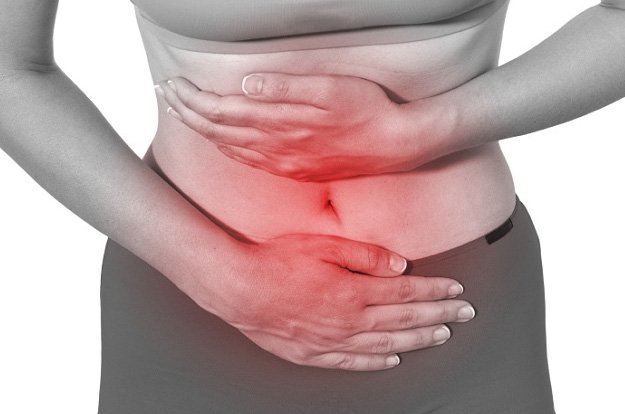
Dysmenorrhea refers to the pain or discomfort associated with menstruation . Although not a serious medical problem, the term describes a woman adolescent girl with menstrual symptoms severe enough to keep her from functioning for a day or two each month.
Menstrual cramps are a common problem for adolescent girls and women. They may be mild, moderate, or severe and are the single most common cause of days missed from school and work. About 10 percent of girls are incapacitated for up to three days each month. Although many teens do not suffer from dysmenorrhea because their uterus is still growing, they may get it several years after their first period begins. The symptoms may begin one to two days before menses, peak on the first day of flow, and subside during that day or over several days.
Primary dysmenorrhea is the more common type of dysmenorrhea and is due to the production of prostaglandins. Prostaglandins are natural substances made by cells in the inner lining of the uterus and other parts of the body. Those made in the uterus make the uterine muscles contract and help the uterus to shed the lining that has built up during the menstrual cycle. It appears, however, that the level of prostaglandins has nothing to do with how strong a woman’s cramps are. Some women have high levels of prostaglandins and no cramps, whereas other women with low levels have severe cramps. Thus cramps must also be related to something other than prostaglandins, such as genetics, stress, and different body types. The first year or two of a girl’s periods are not usually very painful; however, once ovulation begins, the blood levels of the prostaglandins rise, leading to stronger contractions during menstruation. Prostaglandins can also cause headaches, nausea , vomiting , and diarrhea . The likelihood that a woman will have cramps increases if the following apply to her:
- She has a family history of painful periods.
- She leads a stressful life.
- She does not get enough exercise .
- She uses caffeine .
- She has pelvic inflammatory disease.
Primary dysmenorrhea usually presents during adolescence , within three years of menarche. It is unusual for symptoms to start within the first six months after menarche. Affected young women experience sharp, intermittent spasms of pain, usually centered in the suprapubic area. Pain may radiate to the back of the legs or the lower back. Systemic symptoms of nausea, vomiting, diarrhea, fatigue, fever, headache, or lightheadedness are fairly common. Pain usually develops within hours of the start of menstruation and peaks as the flow becomes heaviest during the first day or two of the cycle. Some women notice that painful periods disappear after having their first child. This could be due to the stretching of the opening of the uterus or the fact that birth improves the uterine blood supply and muscle activity.
Secondary dysmenorrhea is defined as menstrual pain due to pelvic pathology. This condition usually occurs after a woman has had normal menstrual periods for some time. It differs from primary dysmenorrheal in that the pain is caused by an abnormality or disease of the uterus, tubes, or ovaries. The most common causes are:
- pelvic inflammatory disease
- fibroids (intracavitary or intramural)
- intrauterine contraceptive devices
- endometriosis
- inflammation and scarring(adhesions)
- functional ovarian cysts
- benign or malignant tumors of ovary, bowel or bladder, or other site
- inflammatory bowel disease
A focused history and physical examination are usually sufficient to make the diagnosis of primary dysmenorrhea. The history reveals the typical cramping pain with menstruation, and the physical examination is completely normal. A doctor should perform a thorough pelvic exam and take a patient history to rule out an underlying condition that could cause cramps. It is usually possible to differentiate dysmenorrhea from premenstrual syndrome (PMS) based on the patient’s history. The pain associated with PMS is generally related to breast tenderness and abdominal bloating, rather than a lower abdominal cramping pain. PMS symptoms begin before the menstrual cycle and resolve shortly after menstrual flow begins.
Circumstances that may indicate secondary dysmenorrheal include the following:
- Dysmenorrhea occurring during the first one or two cycles after menarche (congenital outflow obstruction)
- Dysmenorrhea beginning after 25 years of age
- Late onset of dysmenorrhea after a history without previous pain with menstruation (possibly caused by complications of pregnancy: ectopic or threatened spontaneous abortion)
- Pelvic abnormality on physical examination; infertility (possible endometriosis, pelvic inflammatory disease or other causes of scarring); heavy menstrual flow or irregular cycles (consider adenomyosis, fibroids, polyps); dyspareunia
- Little or no response to therapy with nonsteroidal anti-inflammatory drugs, oral contraceptives, or both
